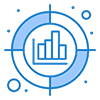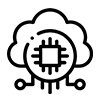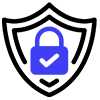- Neptune Heights (5th floor), Plot #2, Road #11, Block C, Section-6, Mirpur, Dhaka-1216
IOT Integration
IoT Integration Services: Bridging the Physical-Digital Divide
IoT Integration Services play a pivotal role in harnessing the potential of the Internet of Things (IoT) by seamlessly connecting physical devices and sensors to digital systems, enabling data-driven decision-making and automation. This involves a series of key processes, each critical in ensuring a smooth and effective integration.


Requirements Analysis and Planning:

Device Selection and Procurement

Connectivity and Network Configuration

Sensor Deployment and Calibration
Data Ingestion and Processing

Integration with Existing Systems



IoT Platform Implementation

Application Development and Visualization

Security and Compliance Measures

Monitoring, Maintenance, and Scalability
In conclusion, IoT Integration Services are a comprehensive approach to seamlessly incorporate IoT technologies into an organization's operations. From requirements analysis to ongoing maintenance, each step is crucial in unlocking the full potential of IoT for data-driven decision-making, automation, and improved operational efficiency. With expert guidance and careful execution, IoT integration services empower businesses to harness the transformative power of the Internet of Things.